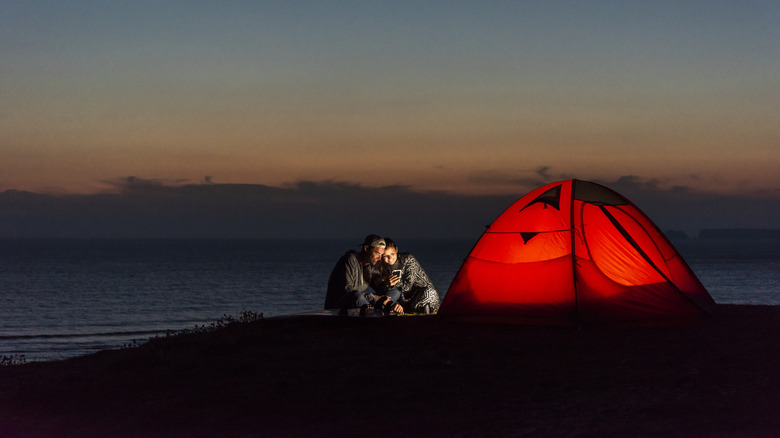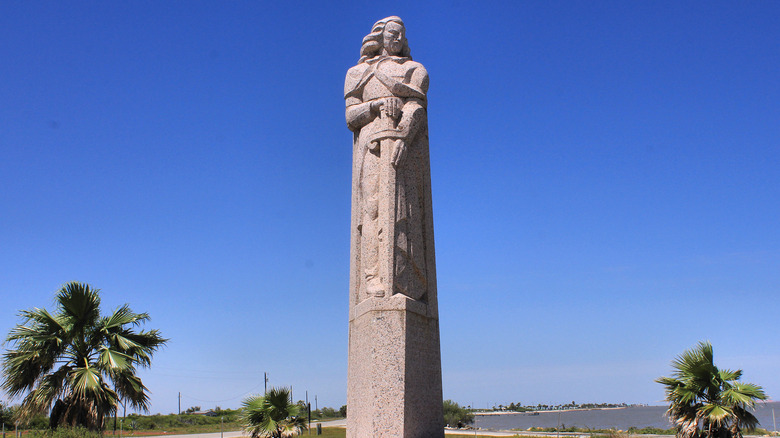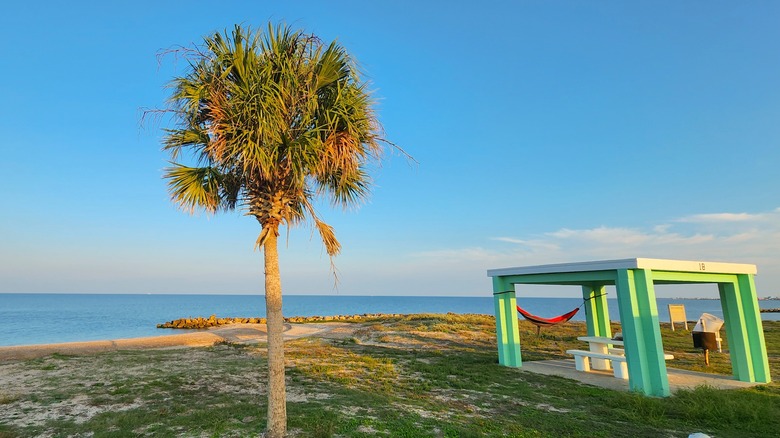Enjoy Free Beachside Camping Near The Site Of A Texas Ghost Town With A Tragic History
Camping near the site of a Texas ghost town sounds like something that shouldn't exist, but it does, and as strange as it may seem, it is an enchanting, peaceful, and — bonus — free experience. Along the Gulf Coast of Texas lie the remnants of a once-thriving port town, Indianola. Once a bustling gateway for European settlers and a crucial trade hub, Indianola now stands as a ghost town with a history marked by tragedy and resilience. Today, visitors can explore the haunting remains of this historic town and also enjoy the unique experience of free camping at a bucket-list Texas beach.
Indianola was founded in 1846 and quickly became one of Texas' most important port cities. Located on Matagorda Bay, it served as a major entry point for immigrants coming to Texas between the 1840s and 1880s. The town's strategic location — between Galveston and Corpus Christi — made it a bustling center of commerce, with ships from all over the world docking at its shores. Indianola's prosperity seemed assured as it grew into a vibrant community with homes, businesses, and public buildings. If nothing bad happened, historians believe the town could have rivaled the size and prowess of Houston.
Unfortunately, something bad did happen. The town's promising future was abruptly shattered by two devastating events. In 1875, a powerful hurricane struck Indianola, causing widespread destruction. The community, with a population of 5,000 at the time, began to rebuild. But just 11 years later, in 1886, another hurricane — this one even more catastrophic — swept through, leaving Indianola in ruins. The town could never fully recover, and its remaining residents deserted the area. Indianola became a ghost town, one of the most chilling abandoned places in America.
Exploring Indianola and beachside camping on Matagorda Bay
For history enthusiasts, adventurous travelers, and those who are curious about exploring some of Texas' spine-chilling tourist attractions that are open year-round, Indianola offers a unique and eerie experience. The remnants of the ghost town are modest. Some remains, like the main street and the foundation of the old courthouse, are submerged in the shallow waters of Matagorda Bay. Otherwise, visitors can explore the weathered headstones in the old cemetery and the historical markers that tell the tale of Indianola's past.
One of the poignant sites in Indianola is the statue of René-Robert Cavelier, Sieur de La Salle, a French explorer who established the first colony at Matagorda Bay in 1685. The statue — erected in 1936 by the State of Texas — stands near the shore and symbolizes the region's far-stretching historical roots, which predate Indianola's founding. "La Salle's colony on Matagorda Bay gave the United States its first claim to Texas," reads the inscription. As you wander through the area, you can try to imagine the life that once filled these now-silent spaces.
While the history of Indianola is undeniably compelling, the opportunity to camp for free along the beautiful shores of Matagorda Bay is equally enticing. The area near Indianola is one of the few very rare spots in Texas where you can still camp for $0. The camping here is primitive — there are no designated campsites, and facilities are minimal — but for those who appreciate solitude and the raw beauty of nature, it's a perfect boondocking escape.
[Image by Larry D. Moore via Wikimedia Commons | Cropped and scaled | CC BY 4.0]
Tips for your visit to Indianola
When you arrive at Indianola Beach Park, you'll find 12 covered areas with picnic tables that can accommodate 12 campsites and plenty of room on the nearby land to fit a couple dozen more campsites. The park operates on a first-come, first-served basis, with a 14-day maximum length of stay. There are trash cans, cooking grills, public toilets, and cold rinse showers. During the weekdays, you will have better chances of finding a spot to set up camp, as on the weekend, it does get a little bit crowded, particularly with RV campers, van-life folks, and fishermen.
Camping along Matagorda Bay allows for a pretty unique blend of experiences. During the day, you can explore the ghost town and learn about its history, then return to your campsite to relax by the water as the sun sets and admire the natural beauty of the Gulf Coast. The bay is ideal for fishing, kayaking, and birdwatching, with a diverse range of species making their home in the area. You might spot herons, egrets, roseate spoonbills, pelicans, ducks, and gulls. The nights are quiet and peaceful, with the waves drifting you off to sleep under the stars.
If you're planning to visit Indianola, keep in mind that the area is relatively remote. Make sure to bring all necessary supplies, including food, water, and camping gear, as amenities are limited. The best time to visit is during the springtime, as Texas summers can be scorching. Remember to respect the environment and the somber historical sites — leave no trace and take only memories. Indianola may be a ghost town, but it's far from forgotten.


